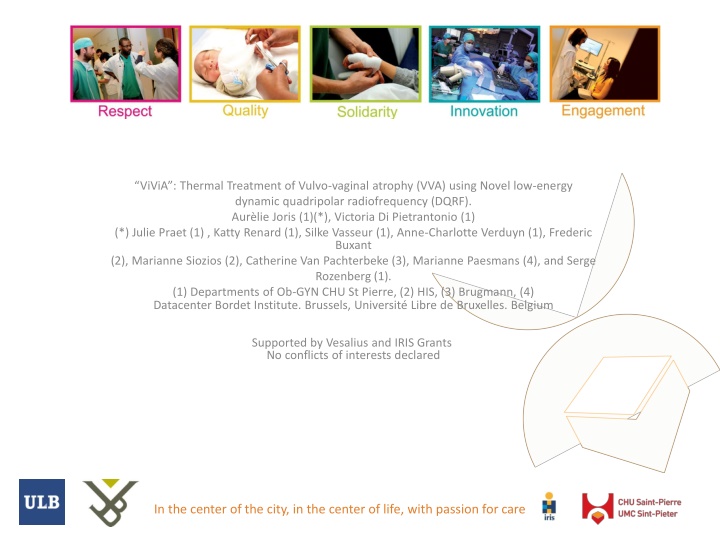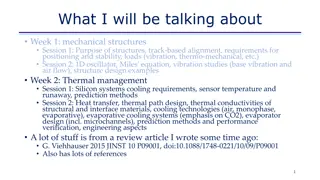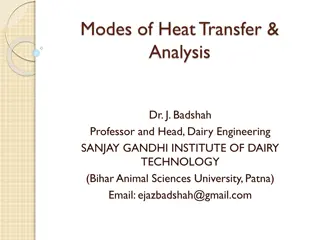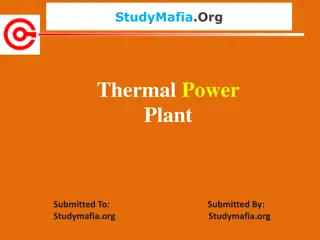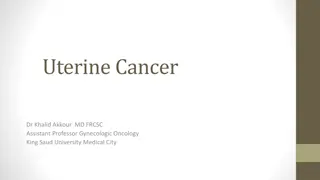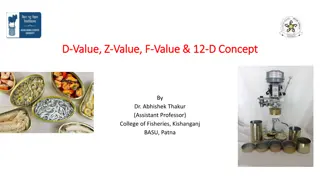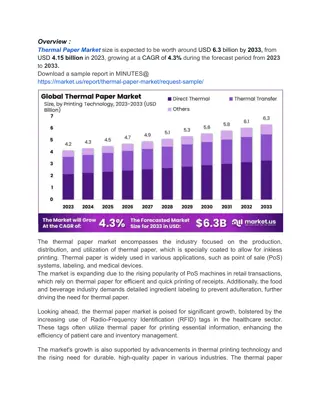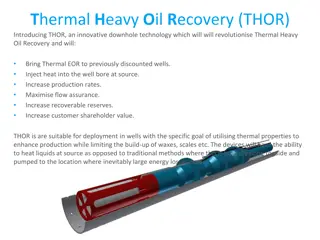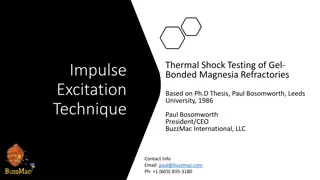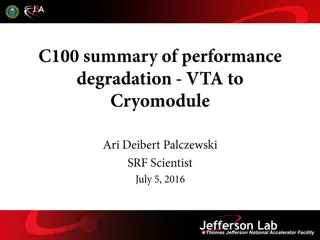Thermal Treatment of Vulvo-vaginal Atrophy Using Dynamic Quadripolar Radiofrequency
Evaluating the safety and efficacy of Dynamic Quadripolar Radiofrequency treatment for Vulvo-vaginal Atrophy (VVA) in postmenopausal women who cannot or prefer not to use hormone therapy. The study compares treatment outcomes of radiofrequency therapy with a control group using pH cream, focusing on symptom improvement and impact on quality of life factors. Although the study was disrupted due to the COVID pandemic, initial results suggest potential benefits of radiofrequency treatment, particularly in improving desire among patients. Subgroup analysis of breast cancer survivors also showed positive outcomes.
Download Presentation

Please find below an Image/Link to download the presentation.
The content on the website is provided AS IS for your information and personal use only. It may not be sold, licensed, or shared on other websites without obtaining consent from the author.If you encounter any issues during the download, it is possible that the publisher has removed the file from their server.
You are allowed to download the files provided on this website for personal or commercial use, subject to the condition that they are used lawfully. All files are the property of their respective owners.
The content on the website is provided AS IS for your information and personal use only. It may not be sold, licensed, or shared on other websites without obtaining consent from the author.
E N D
Presentation Transcript
ViViA: Thermal Treatment of Vulvo-vaginal atrophy (VVA) using Novel low-energy dynamic quadripolar radiofrequency (DQRF). Aur lie Joris (1)(*), Victoria Di Pietrantonio (1) (*) Julie Praet (1) , Katty Renard (1), Silke Vasseur (1), Anne-Charlotte Verduyn (1), Frederic Buxant (2), Marianne Siozios (2), Catherine Van Pachterbeke (3), Marianne Paesmans (4), and Serge Rozenberg (1). (1) Departments of Ob-GYN CHU St Pierre, (2) HIS, (3) Brugmann, (4) Datacenter Bordet Institute. Brussels, Universit Libre de Bruxelles. Belgium Supported by Vesalius and IRIS Grants No conflicts of interests declared In the center of the city, in the center of life, with passion for care
Introduction & Aim Vulvo-vaginal atrophy (VVA) or genitourinary syndrome of menopause (GSM) affects as many as 70% of postmenopausal women. We evaluated safety and efficacy of Dynamic Quadripolar Radio-frequency thermal treatment with VDRTM (Vaginal Dynamic Radio-frequency) and RSSTM(Radio-frequency Safety System) for the treatment of GSM in postmenopausal women, who presented contra-indication or were not willing to use menopause hormone therapy (MHT).
Material and method (1): Prospective randomized study (Central randomization), evaluating pH cream (control group) therapy versus Dynamic Quadripolar Radio-frequency with VDR. Selection criteria: Postmenopausal women suffering of self-identified mild to severe VVA (n=53), but only the results of 48 patients who terminated the study, due to the COVID pandemic, were analyzed. Introduction : Vulvo-vaginal atrophy (VVA) or genitourinary syndrome of menopause (GSM)
Material and method (2): Procedure : Group I was treated with a fixed amount of pH cream (self- administrated twice weekly) for 10 weeks (control group). Group II was treated with Dynamic Quadripolar Radio-frequency 4 to 6 sessions (one every 14-16 days) for 10 weeks. Outcomes : Co-primary endpoints: change from baseline to week 12 of self-assessment of the most bothersome symptoms evaluated by questionnaires (Vulvovaginal Symptom Questionnaire, VAS, FSFI) and changes in severity of dyspareunia (Vaginal Health Index , VMI). We also conducted exploratory analyses in subgroups of patients (eg. breast cancer survivors). Statistical analyses : We tested whether the change of outcomes between baseline and week 12 varied between group 1 and 2, using two sample t test and Mann-Whitney test.
Results: The study was interrupted yearly due to the Covid Pandemic. No statistical differences were observed between groups, except a moderate improvement in desire among patients treated by DQRF versus cream (median difference & IQR =1 & IQR 0 to 2 vs 0 & IQR -1 to 1; p=0. 013). Among breast cancer survivors (n=20), an improvement was observed in desire ( 1.5 IQR 0.75 to 4.5 vs 0 IQR -1 to 1; p=0. 01), excitation (4 IQR 0.75 to 8 vs 0 IQR -3 to 0; p=0. 006), orgasm (2.5 IQR 0 to 5.75 vs 0 IQR -2 to 0; p=0. 013) and satisfaction (1.5 IQR 0.75 to 4 vs -1 IQR -2 to 0; p=0. 02).
Discussion and conclusion: We failed to observe overall differences in patient improvements, but observed modest improvements among breast cancer patients. We acknowledge that the COVID Pandemic and the lack of power of our study (we calculated that 112 patients were originally needed) may have contributed to these negative results.
